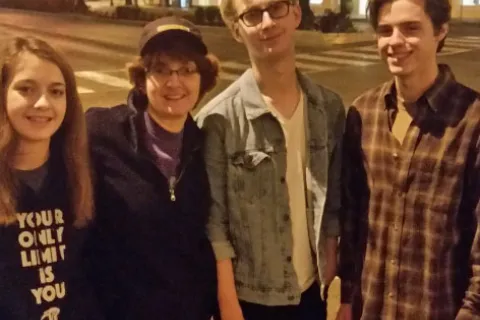Advocates and researchers discuss solutions to reduce autism health care disparities
January 7, 2020Jim Ronyak and his wife drove their son 176 miles, each way, every weekend to receive services when they lived on the Colville Reservation in Washington state. It cost them $15,000 a year – just in travel expenses – before they moved to an area with more services.
For Bin Feng, a parent support advocate in a Chinese immigrant community in New York City, cultural and social barriers keep many in his community from seeking support and advocating for their children.
“We have a social barrier because we came from a country where government controls everything, and schools can reject your child if they have special needs. You can’t disagree with the school,” Feng said. “Here, you have the right to fight for your children. This is why we love this country.”
Kim Kaiser, an autism patient navigator, sees how families with few or no resources, little support, and economic and physical barriers to getting appropriate care struggle with meeting their children’s needs.
This reality existed for families in New York City, where she began her career in autism services, as well as the rural upstate New York region where she now lives and works. Each environment presents its own set of challenges for autistic people and their families, and those challenges are further complicated by racial, ethnic and cultural issues.
“The memory of Emmett Till lives in every black mother. That fear is there. That fear is compounded when your child is autistic,” said Kaiser, referring to a well-known victim of a 1955 lynching who was just 14 years old. Kaiser also has a 13-year-old son with autism.
For Kaiser, understanding these unique needs across geographic areas, socioeconomic classes and demographic groups is what should be driving where and how the health care system delivers services.
The complex question of understanding who is not receiving quality, timely and culturally appropriate autism care – as well as how to fix these inequities – was the focus of the Autism Speaks Thought Leadership Conference on Health Equity in Washington, D.C., on Dec. 10 and 11.
“We can only start to tackle this problem by getting all stakeholders together to figure out how we can bring about more equitable health care for autistic people,” said Thomas W. Frazier, chief science officer for Autism Speaks.
Researchers presented some of the most current findings about these disparities, including the recognition that less than 20 percent of autism studies even report racial and ethnic information about the study participants. Of those that do, participants are overwhelmingly white and male.
By not evaluating how different treatments and supports perform in more diverse participants, many studies may be overlooking whether and how they are effective for nonwhite groups, according to several speakers.
Other researchers presented results from programs that are working on the local level and may serve as a model for scaling up to larger solutions in similar areas around the country. These programs include enhancing screening and early identification for underserved groups, developing culturally competent interventions for a diverse autism population, interventions for low-resource communities and supported employment programs.
“Most of the efforts are put on children K through 12, but there’s a world of us adults out here, too. We need other supports like jobs, job coaches, housing and opportunities for social interactions,” said Dennis Taylor, a graphic artist with autism who works with several advocacy groups, including ASPEN and Spectrum Works. “It was good to hear there ARE other agencies like Spectrum Works out there, hiring and training adults on the spectrum. Maybe they can work together for a stronger voice - and more funding. I was really encouraged to see that more attention is being paid to minorities and people in geographically challenged areas.”
“Gathering perspectives here is critical to guiding our future work at Autism Speaks,” said Andy Shih, vice president of public health and inclusion and the meeting organizer. “We hope that the connections made here – among practicing physicians, autistic people and family members, front-line care coordinators and academics – will form the basis for community-informed research that ultimately enhances care and outcomes for people with autism.”









